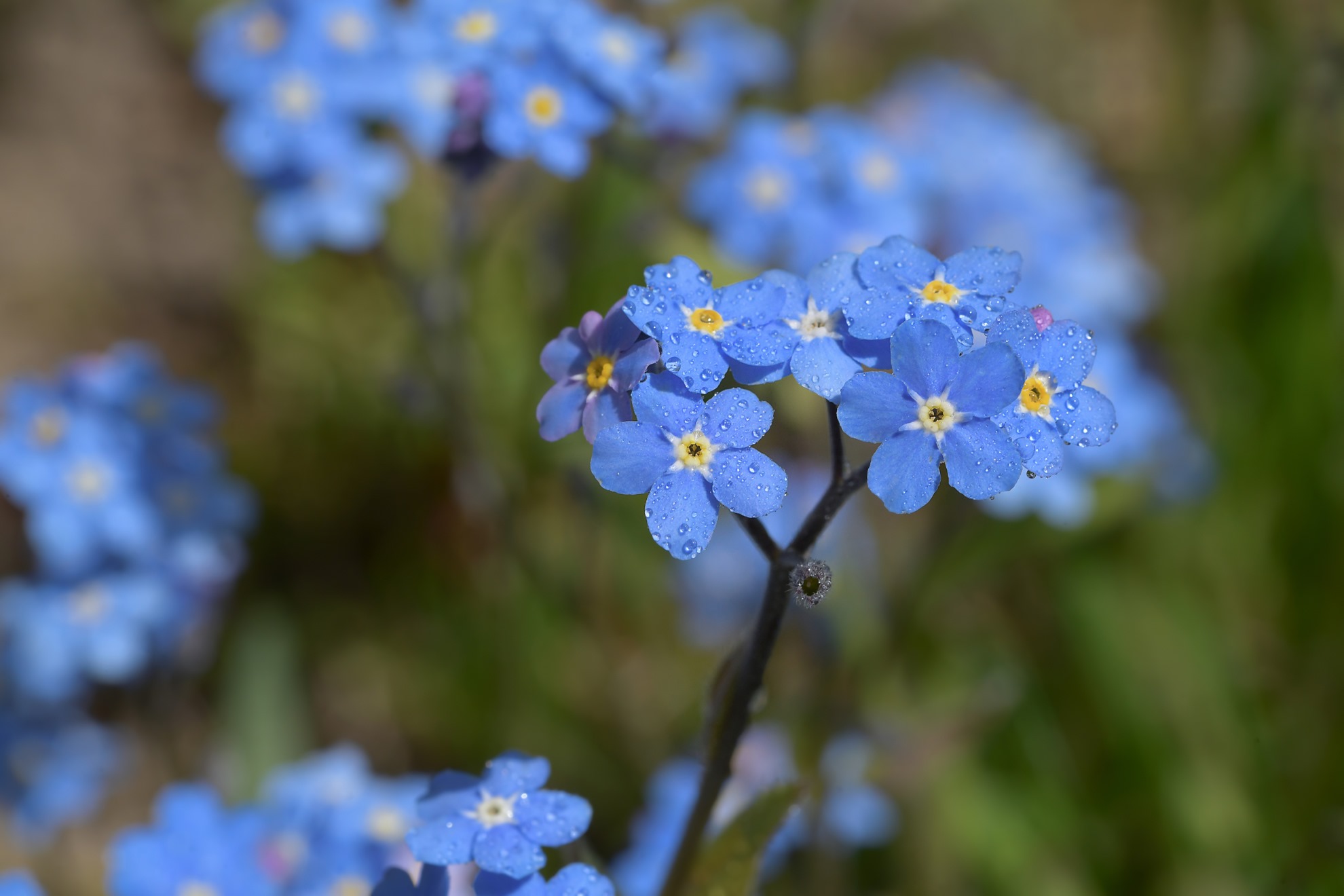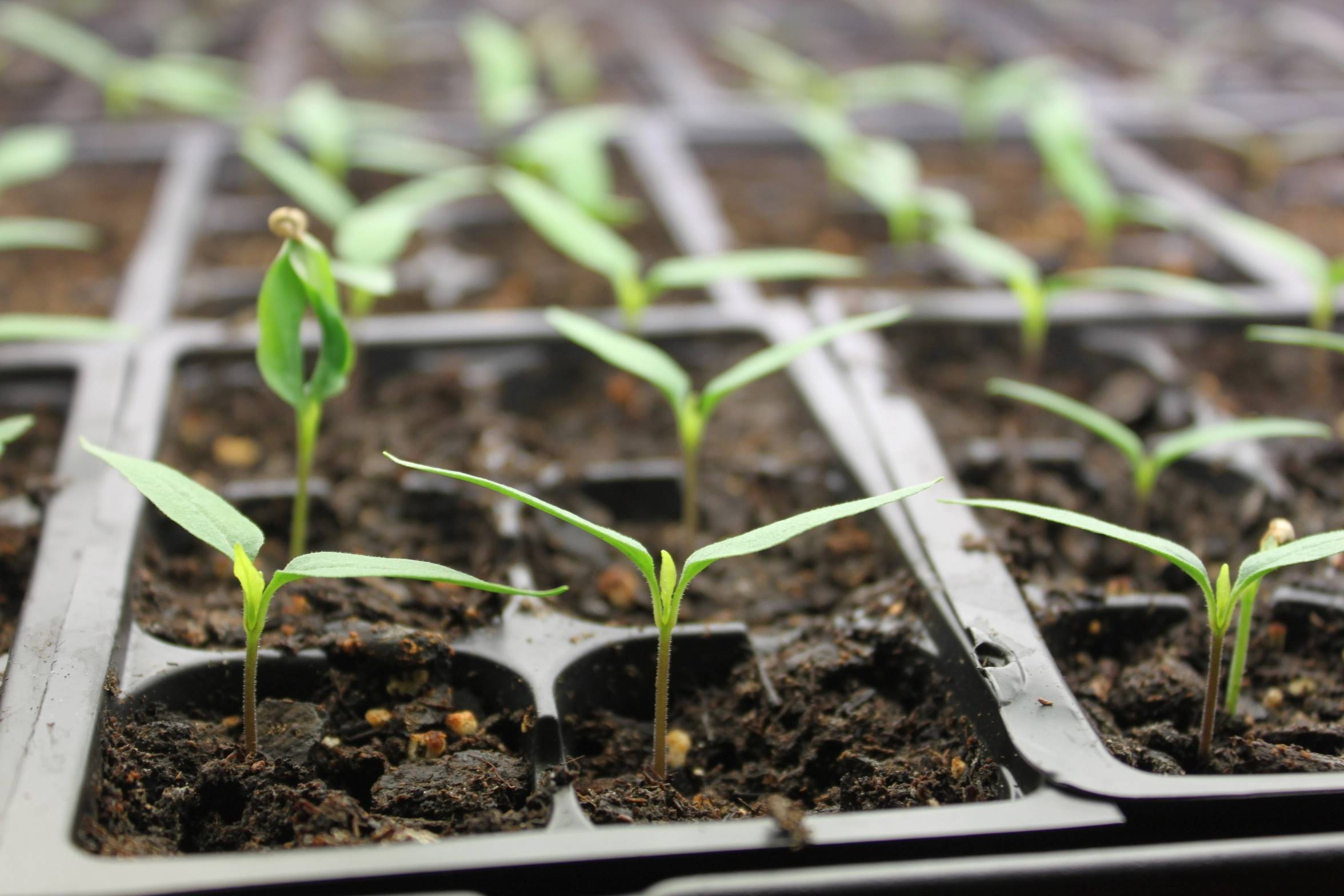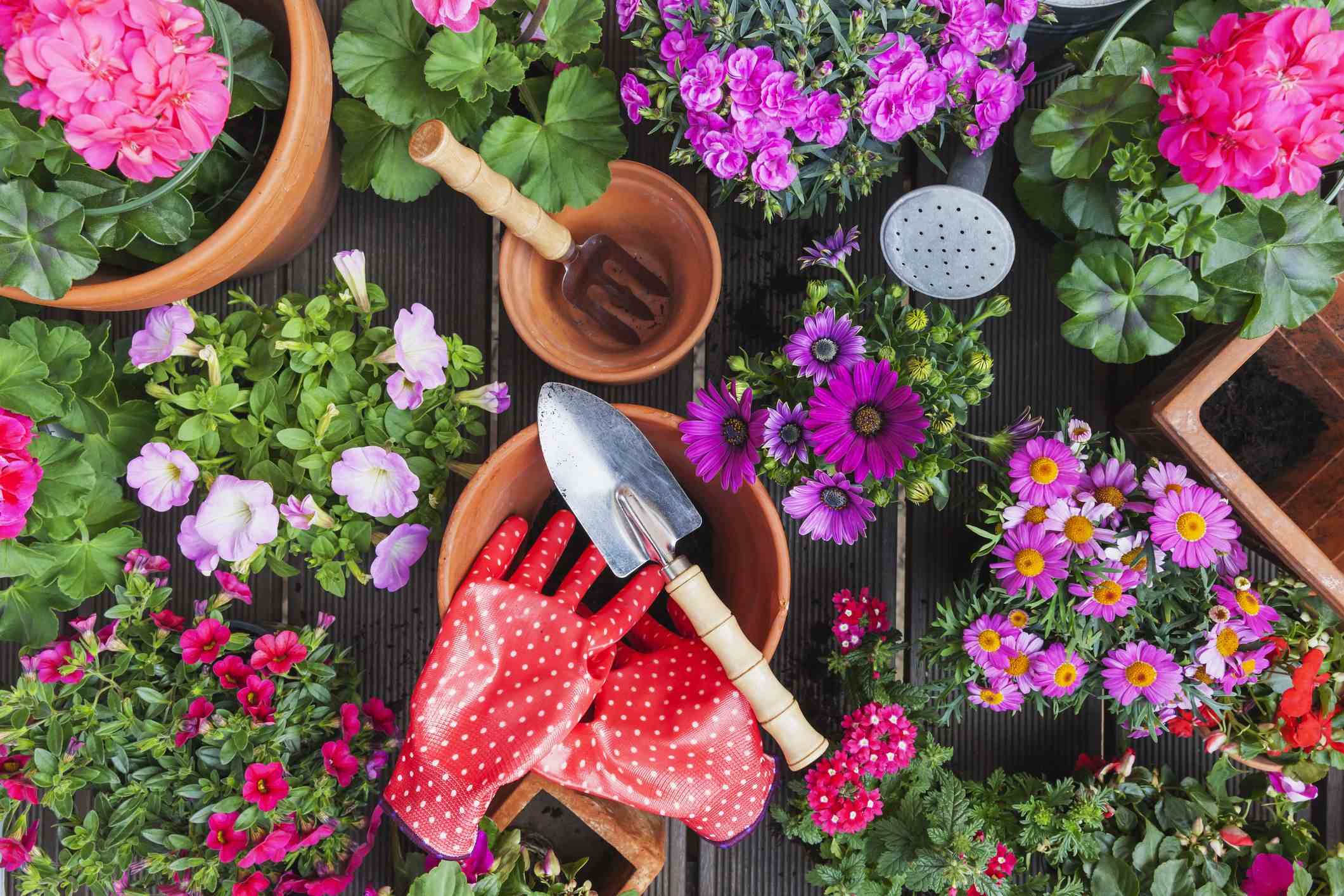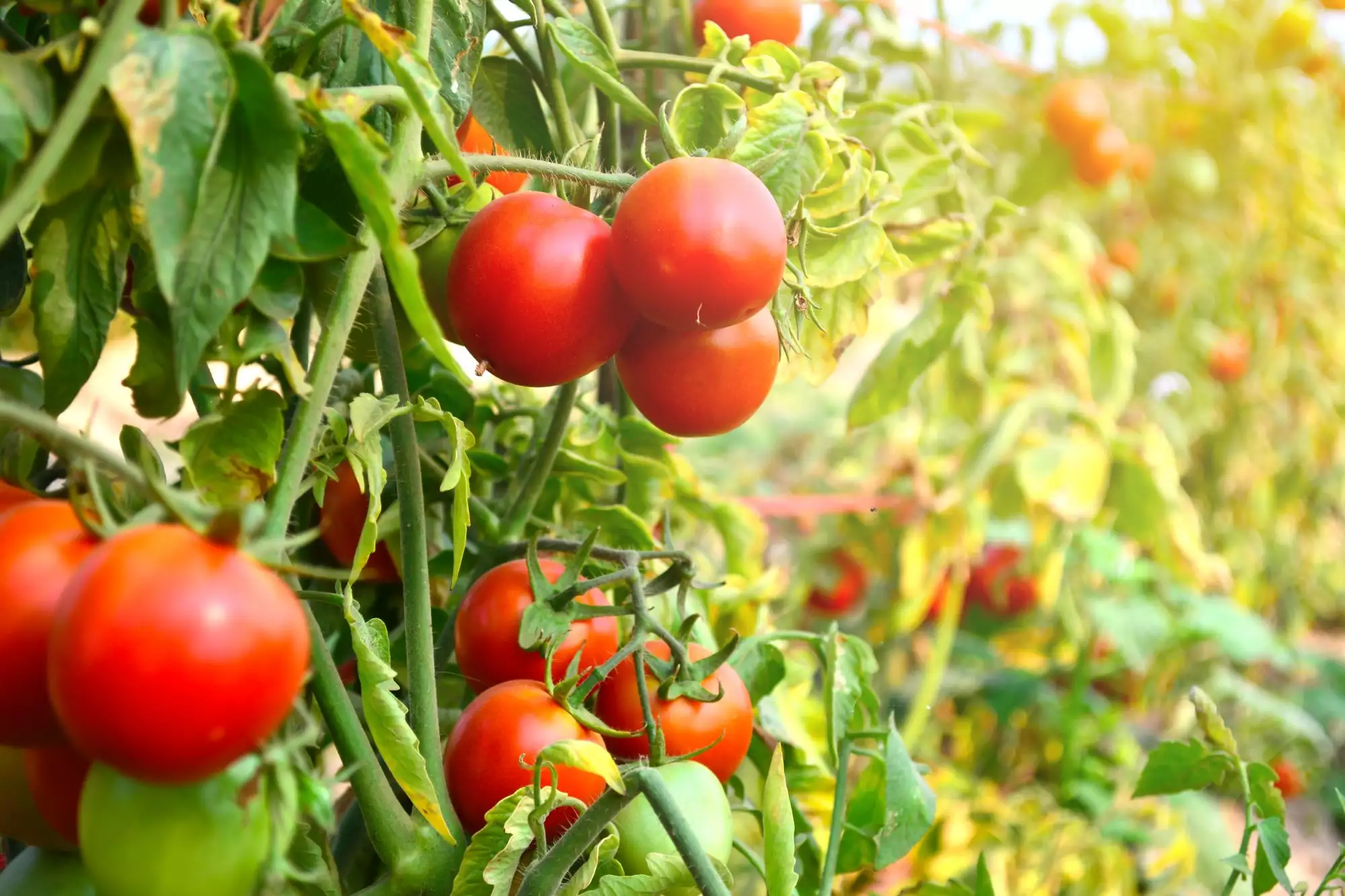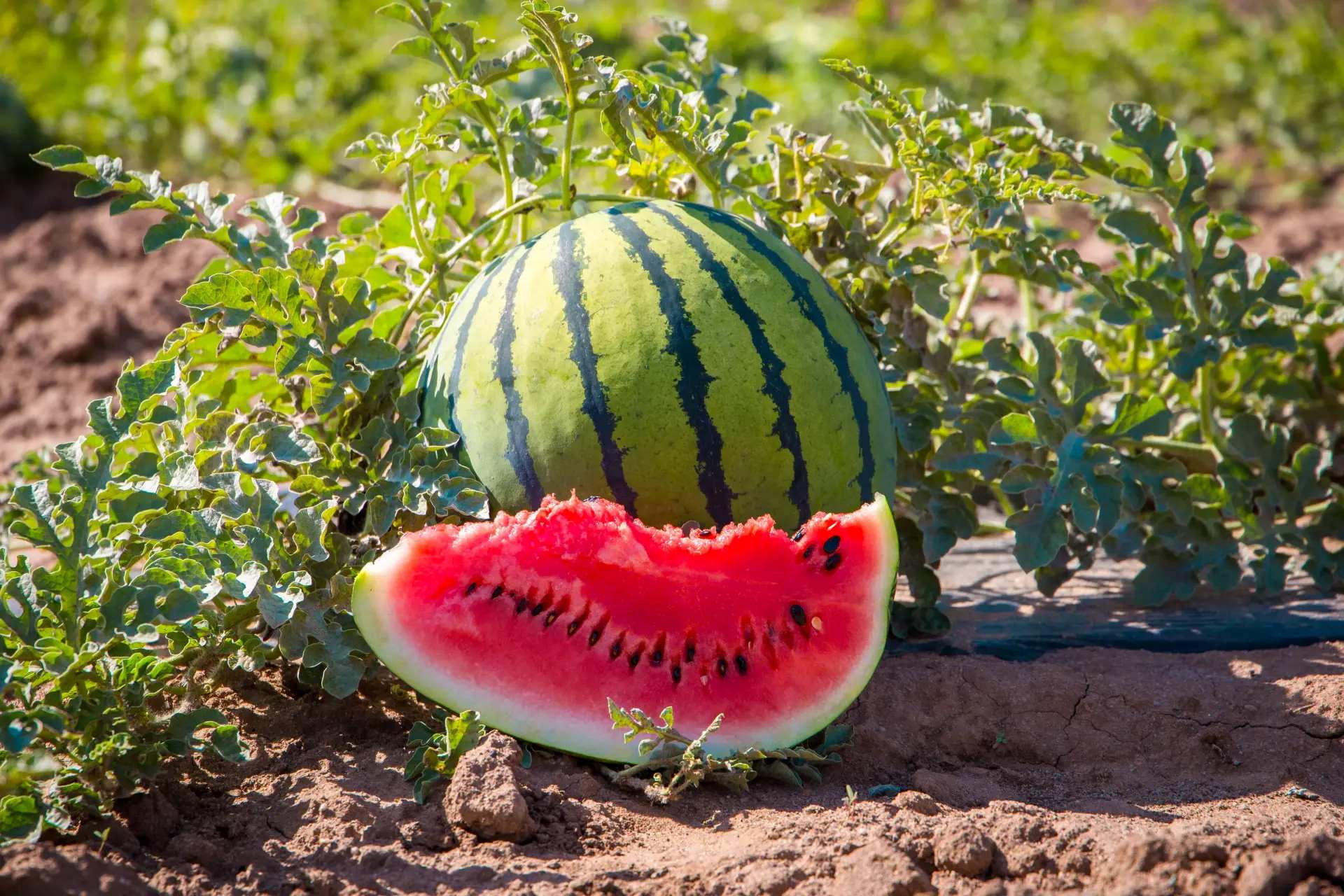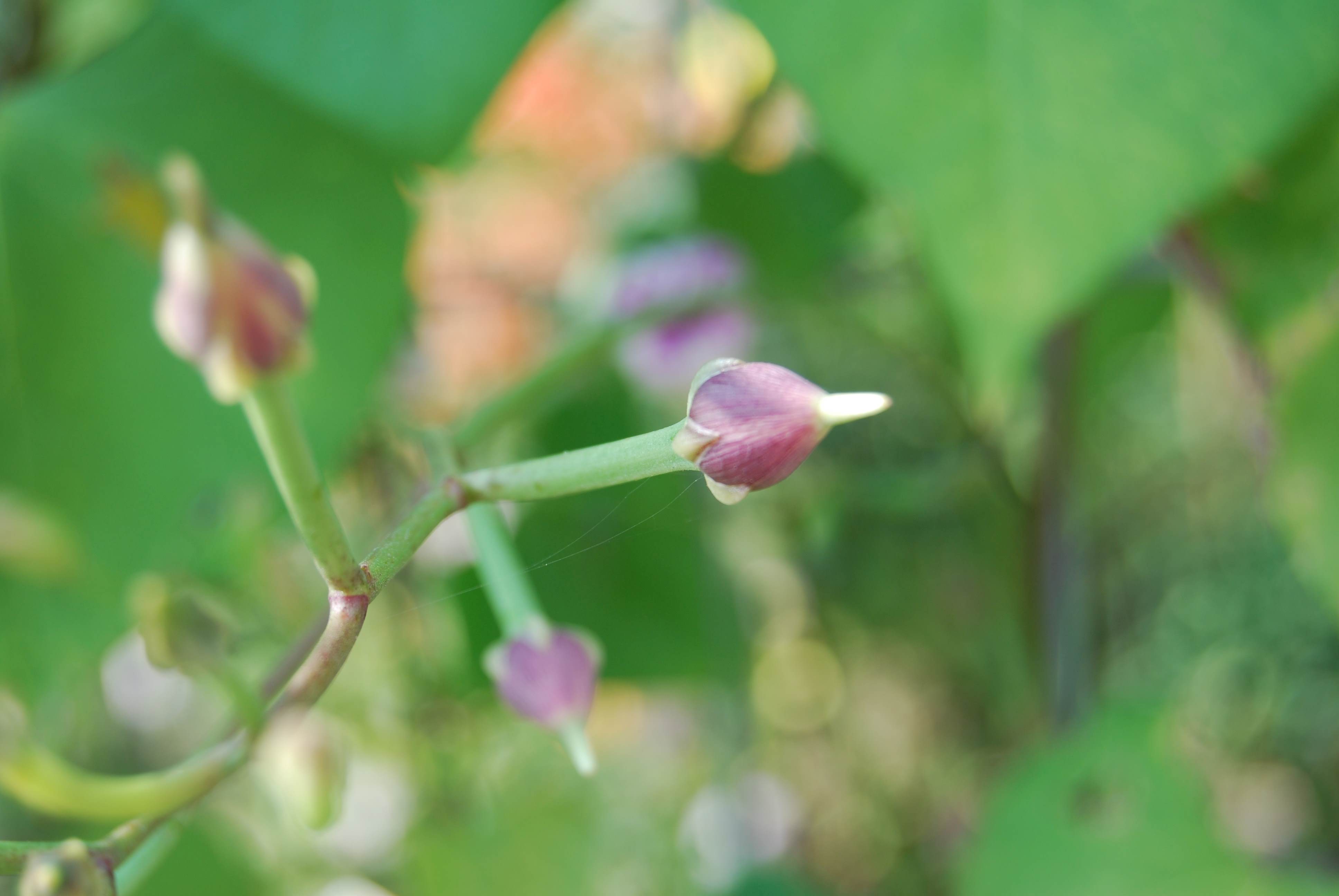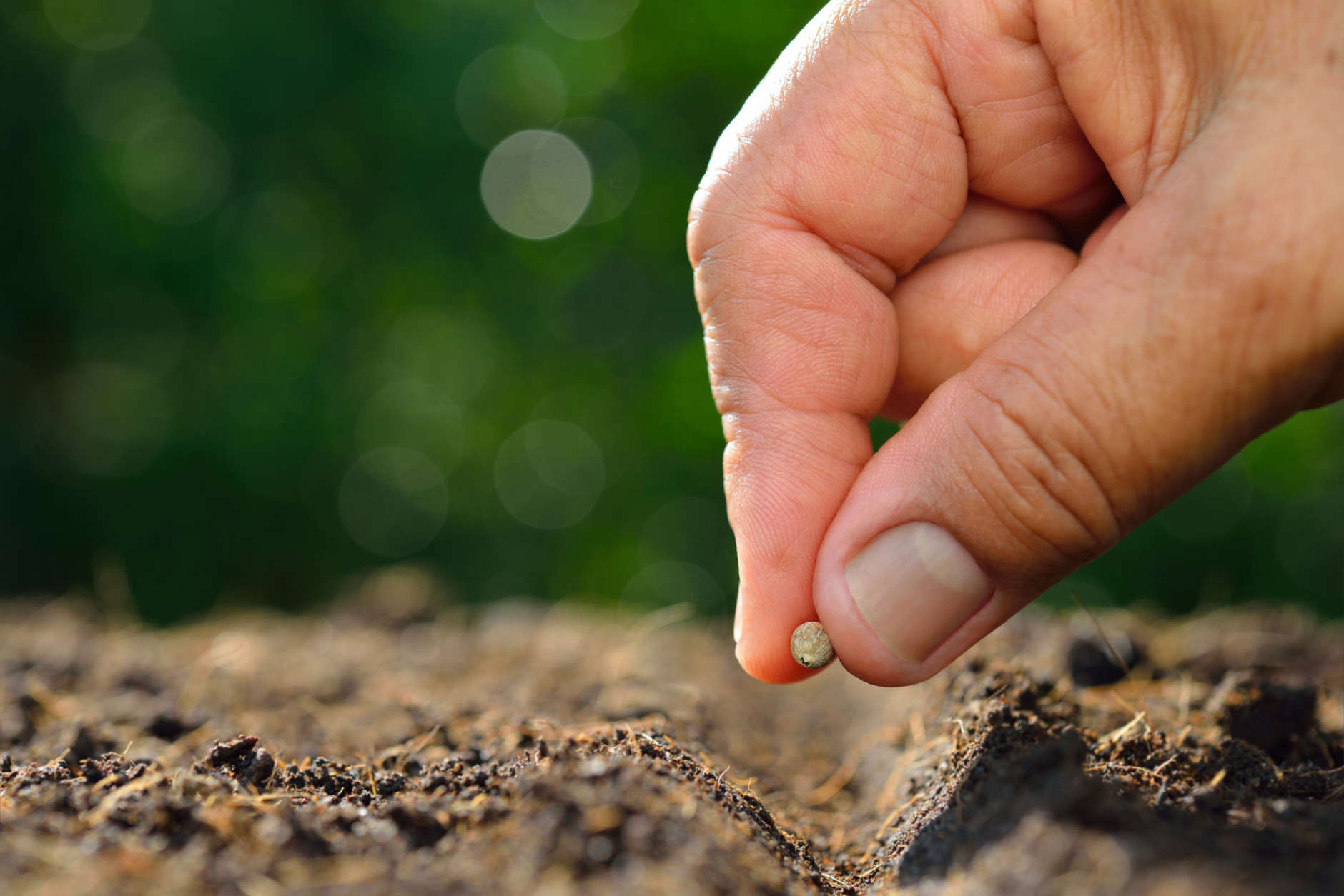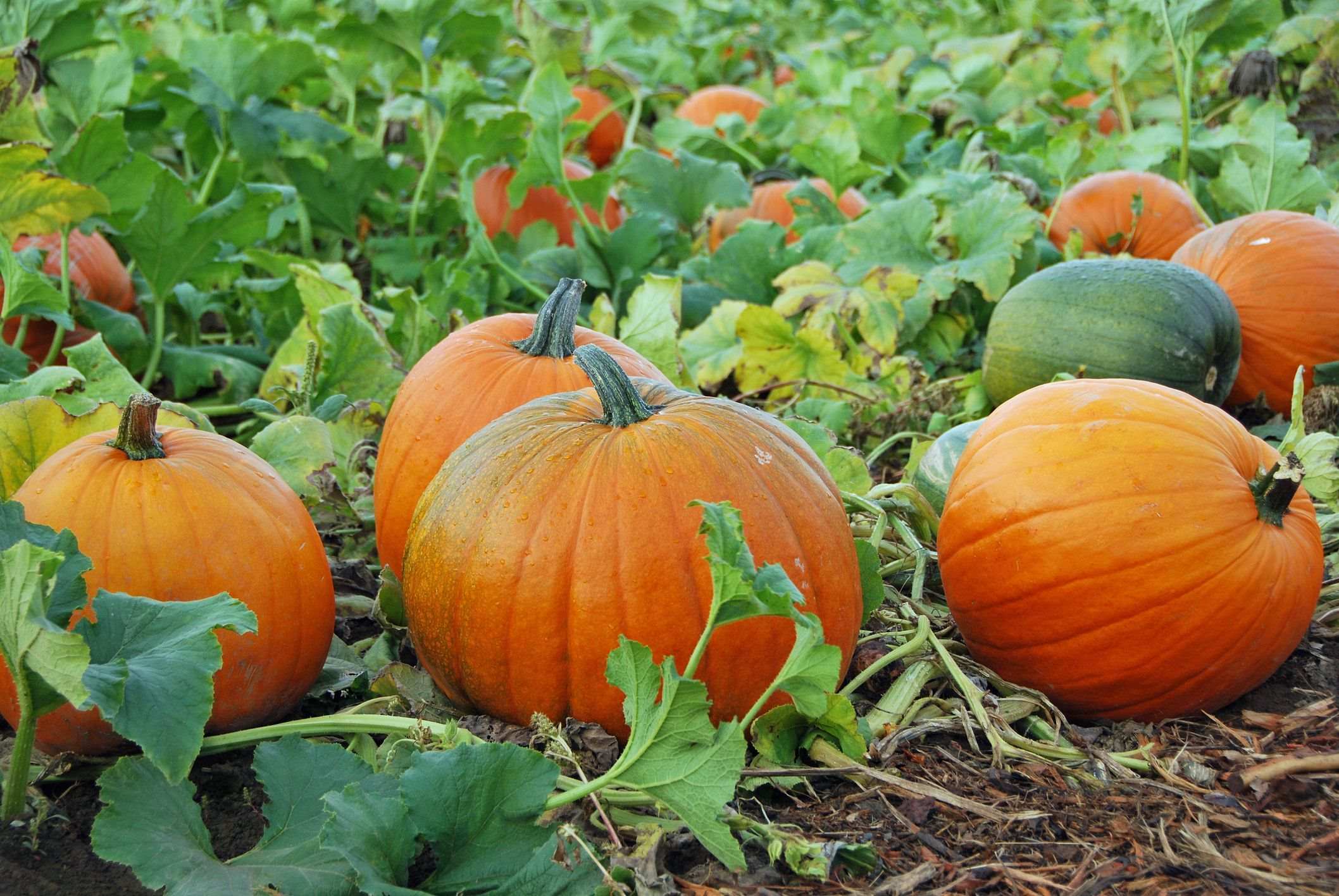Home>Types of Gardening>Edible Gardening>When To Plant Okra Seeds
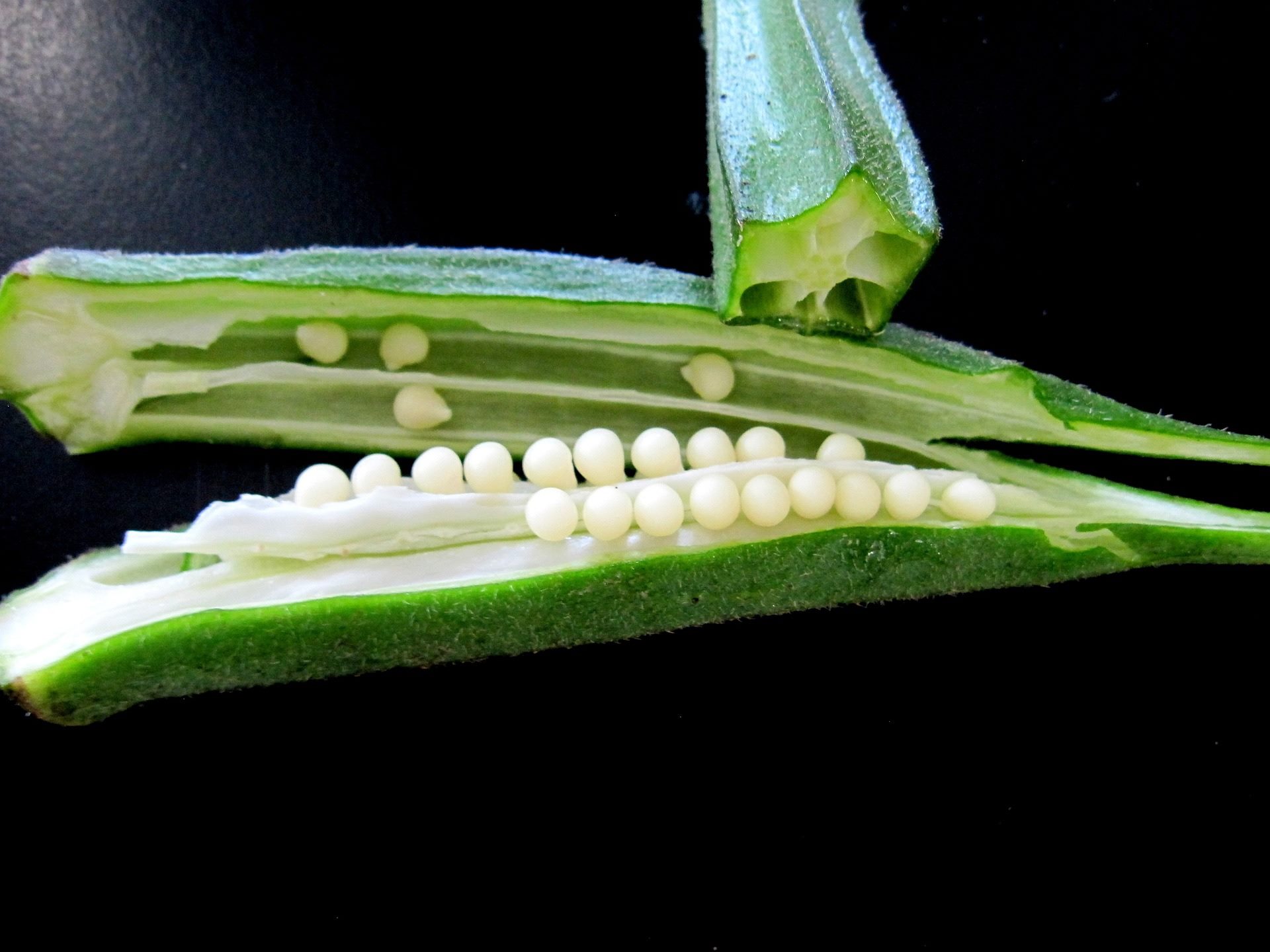

Edible Gardening
When To Plant Okra Seeds
Modified: January 22, 2024
Learn when to plant okra seeds in your edible gardening journey. Discover the best time to sow this versatile vegetable and ensure a successful harvest.
(Many of the links in this article redirect to a specific reviewed product. Your purchase of these products through affiliate links helps to generate commission for Chicagolandgardening.com, at no extra cost. Learn more)
Table of Contents
Introduction
Welcome to the world of edible gardening! Are you ready to embark on a journey of growing your own delicious and nutritious vegetables? If so, you’ve come to the right place. In this article, we will be focusing on one particular vegetable: okra. Whether you’re a seasoned gardener or just starting out, planting okra seeds can be a rewarding experience.
Okra, also known as “lady’s fingers,” is a warm-season vegetable that thrives in hot and humid climates. It is beloved for its unique taste and nutritional benefits. Rich in fiber, vitamin C, and antioxidants, okra is a versatile vegetable that can be enjoyed in various culinary dishes.
Before you begin planting okra seeds, there are a few factors to consider. Timing is crucial when it comes to successful okra cultivation. You also need to ensure that your garden or container setup is suitable for growing this vegetable. With the right knowledge and techniques, you can cultivate a bountiful harvest of okra right in your backyard.
In this article, we will discuss the optimal time to plant okra seeds, the steps involved in planting them, common mistakes to avoid, and tips for a successful harvest. By the end, you’ll have all the information you need to start your journey towards growing your own fresh and delicious okra.
Factors to Consider Before Planting Okra Seeds
Before you dive into planting okra seeds, there are a few important factors to consider. By taking these factors into account, you can ensure the best possible growing conditions and maximize your chances of a successful harvest.
- Climate: Okra thrives in warm and humid climates. It requires a minimum temperature of 60°F (15°C) to germinate and grow. If you live in a region with short and cool summers, it may be challenging to grow okra. Ideally, the temperature should be consistently above 70°F (21°C) for optimal growth.
- Sunlight: Okra is a sun-loving plant and requires full sun exposure to thrive. Choose a location in your garden that receives at least 6-8 hours of direct sunlight each day. Without adequate sunlight, the plants may grow weak and produce fewer pods.
- Soil: Okra prefers well-draining soil rich in organic matter. Test your soil’s pH level and aim for a slightly acidic to neutral range between 6.0 and 7.5. If your soil is heavy or clayey, consider adding compost or organic matter to improve its drainage and fertility.
- Spacing: Okra plants can grow quite tall, reaching heights of 4-6 feet (1.2-1.8 meters). When planting okra seeds, allow for a spacing of at least 12-18 inches (30-45 centimeters) between each plant. This ensures proper air circulation and prevents overcrowding, which can lead to disease and poor growth.
- Companion Plants: Okra is known to have beneficial companion plants, such as marigolds, which help repel pests and attract beneficial insects. Consider planting these companions near your okra plants to create a harmonious and pest-resistant garden.
By considering these factors, you can create an optimal growing environment for your okra plants. Remember that every garden is unique, so it’s important to assess your specific conditions and make any necessary adjustments to ensure the success of your okra crop.
Optimal Time to Plant Okra Seeds
Timing plays a crucial role in the success of your okra crop. Okra is a warm-season vegetable that thrives in hot and humid conditions. It is important to plant okra seeds when the weather is consistently warm to ensure proper germination and growth.
The optimal time to plant okra seeds is in the late spring or early summer, when the soil temperature has warmed up to at least 60°F (15°C). In most regions, this corresponds to planting okra seeds after the last spring frost date. However, if you live in a colder climate with shorter growing seasons, you may need to start your okra seeds indoors a few weeks before the last frost and transplant them outside once the weather warms up.
It is important to note that okra seeds require warm soil to germinate. If the soil temperature is below 60°F (15°C), the seeds may rot or fail to sprout. Using a soil thermometer can help you determine if the conditions are suitable for planting.
Additionally, okra is a fast-growing plant that requires a long growing season. It typically takes around 55 to 60 days for okra plants to start producing pods once they are established. Considering this, it is best to plant okra seeds in a window of time that allows for a sufficient growing season before the first fall frost arrives.
If you’re unsure about the optimal planting time for your specific region, you can consult your local agricultural extension office or experienced gardeners in your area. They will have valuable knowledge about the specific climate and growing conditions in your region.
By planting your okra seeds at the optimal time, you give your plants the best chance to establish themselves and thrive throughout the growing season. This results in healthier plants, higher yields, and a more rewarding gardening experience.
Steps to Plant Okra Seeds
Planting okra seeds is a relatively simple process that can be done by following these step-by-step instructions:
- Prepare the soil: Choose a sunny spot in your garden with well-draining soil. Remove any weeds or debris and loosen the soil using a garden fork or tiller. Add compost or well-rotted manure to enrich the soil with nutrients.
- Soak the seeds: Before planting, soak the okra seeds in water overnight. This helps to soften the seed coat, promoting faster germination.
- Plant the seeds: Dig a small hole in the prepared soil, approximately 1 inch (2.5 centimeters) deep. Space the holes 12-18 inches (30-45 centimeters) apart. Place one soaked okra seed in each hole and cover it with soil, gently firming it down.
- Water thoroughly: After planting, water the soil thoroughly to ensure good seed-to-soil contact and to help the seeds establish roots.
- Maintain consistent moisture: Okra prefers consistently moist soil, especially during the germination and early growth stages. Regularly check the soil moisture and water as needed to keep the soil evenly moist.
- Provide support (optional): As the okra plants grow taller, they may require support to prevent them from toppling over in strong winds. Consider using stakes or a trellis to provide support for the plants.
- Monitor and care for the plants: Keep an eye out for any pests or diseases and take appropriate measures to protect your okra plants. Regularly weed around your plants to prevent competition for nutrients and water.
- Harvest the pods: Okra pods are ready to be harvested when they reach around 2-3 inches (5-7 centimeters) in length. Use a sharp knife or scissors to cut the pods from the plants. Harvest them regularly to encourage continuous pod production.
Following these steps will help ensure a successful okra seed planting experience. Remember to provide proper care and attention to your plants as they grow, and enjoy the satisfaction of harvesting your own homegrown okra.
Common Mistakes to Avoid when Planting Okra Seeds
While planting okra seeds is generally straightforward, there are a few common mistakes that gardeners should avoid to ensure successful growth and a bountiful harvest. By being aware of these pitfalls, you can set yourself up for a more rewarding gardening experience.
- Planting too early: Okra is a warm-season vegetable that requires consistently warm soil to germinate and grow. Avoid planting okra seeds too early in the season when the soil is still cool. Wait until the soil temperature is consistently above 60°F (15°C) to ensure optimal seed germination.
- Overcrowding: Okra plants can grow quite tall, and overcrowding can lead to poor air circulation, increased disease susceptibility, and reduced yields. Provide enough spacing between each plant, typically 12-18 inches (30-45 centimeters), to allow for proper growth and development.
- Improper watering: Okra prefers consistently moist soil, especially during the germination and early growth stages. However, overwatering can cause the roots to rot, while underwatering can lead to stunted growth. Maintain a balance by watering the plants deeply but infrequently, allowing the top couple of inches of soil to dry out between waterings.
- Neglecting weed control: Weeds can compete with okra plants for nutrients, water, and sunlight. Regularly weed around your okra plants to keep the area weed-free and minimize competition. Using mulch can also help suppress weeds and retain soil moisture.
- Skipping soil preparation: Okra plants thrive in well-draining soil rich in organic matter. Prepare your soil by removing weeds, loosening it with a fork or tiller, and incorporating compost or well-rotted manure. This helps improve soil fertility and drainage, creating an ideal growing environment for your okra plants.
- Ignoring pests and diseases: Okra plants can be susceptible to various pests and diseases, including aphids, flea beetles, and powdery mildew. Regularly inspect your plants for any signs of pest or disease infestations and take appropriate measures to control them, such as using organic insecticides or natural pest control methods.
- Not harvesting on time: Okra pods should be harvested when they are young and tender, typically around 2-3 inches (5-7 centimeters) in length. If left on the plant for too long, the pods can become tough and fibrous. Regularly check your okra plants and harvest the pods to encourage continuous production.
By avoiding these common mistakes, you can increase the chances of success with your okra seeds and enjoy a healthy and productive okra harvest.
Tips for Successful Okra Seed Planting
Planting okra seeds can be a rewarding experience, and with a few helpful tips, you can increase your chances of success and enjoy a thriving okra crop. Consider the following tips to make the most of your okra seed planting:
- Choose the right variety: There are several okra varieties available, each with its own unique characteristics. Consider factors such as pod color, size, and plant height when selecting a variety that suits your preferences and growing conditions.
- Start with quality seeds: Ensure that you have fresh, high-quality okra seeds. Purchase them from reputable seed suppliers or save seeds from your own healthy okra plants. Starting with viable seeds increases the likelihood of successful germination and growth.
- Pre-soak the seeds: Soaking okra seeds overnight before planting can help soften the seed coat and promote faster and more uniform germination. Remember to drain the water and plant the seeds promptly after soaking.
- Provide proper support: As okra plants grow, they can become top-heavy and may require support to prevent them from falling over. Consider using stakes, cages, or trellises to provide support and keep the plants upright.
- Implement crop rotation: To prevent the buildup of pests and diseases, it’s beneficial to practice crop rotation. Avoid planting okra in the same spot year after year. Rotate your crops by planting okra in a different area of your garden or bed each season.
- Monitor pests and diseases: Regularly inspect your okra plants for signs of pests or diseases. Early detection allows for prompt action and minimizes damage. Use organic pest control methods, such as hand-picking insects or using insecticidal soaps, to keep pests at bay.
- Harvest regularly: Harvest okra pods when they reach the optimal size, typically 2-3 inches (5-7 centimeters) in length. Regular harvesting promotes continuous production and encourages the plant to produce more pods. Avoid allowing the pods to become overripe and fibrous.
- Keep a gardening journal: Maintaining a gardening journal can be immensely helpful. Note down planting dates, weather observations, pest and disease issues, and any other relevant information. This allows you to track and analyze your experiences, making adjustments for future okra plantings.
- Enjoy the process: Gardening is a journey, and it’s important to enjoy the process. Experiment with different planting techniques, explore new varieties, and take pride in your efforts. Learn from both successes and challenges, and embrace the joy of growing your own delicious okra.
By following these tips, you can set yourself up for a successful and enjoyable okra seed planting experience. With a little care, attention, and patience, you’ll soon be savoring the fruits of your labor with a bountiful harvest of fresh and tasty okra pods.
Conclusion
Congratulations on learning all about planting okra seeds! Armed with the knowledge of optimal planting times, the necessary steps, and tips for success, you are well-prepared to embark on your edible gardening journey with okra. With its unique taste and nutritional benefits, growing your own okra can provide you with delicious additions to your meals and a sense of accomplishment.
Remember, when planting okra seeds, take into consideration the climate, sunlight, soil, spacing, and companion plants. Avoid common mistakes such as planting too early, overcrowding, neglecting weed control, and improper watering. Instead, aim for success by providing a suitable environment and care for your okra plants.
Pay attention to details such as pre-soaking the seeds, providing support as the plants grow, and monitoring pests and diseases diligently. Regular harvesting of young pods will encourage continuous production and ensure the best flavor and texture of your okra harvest.
Always enjoy the journey of gardening and keep experimenting with different techniques to enhance your skills. Keeping a gardening journal can help you track your progress and learn from each experience.
Now that you have all the guidance necessary, it’s time to put your knowledge into action and grow your own thriving okra plants. Get your hands dirty, observe nature’s wonders, and soon you’ll be rewarded with a satisfying harvest of delicious homegrown okra.
Happy planting and may your future okra endeavors be fruitful and enjoyable!
